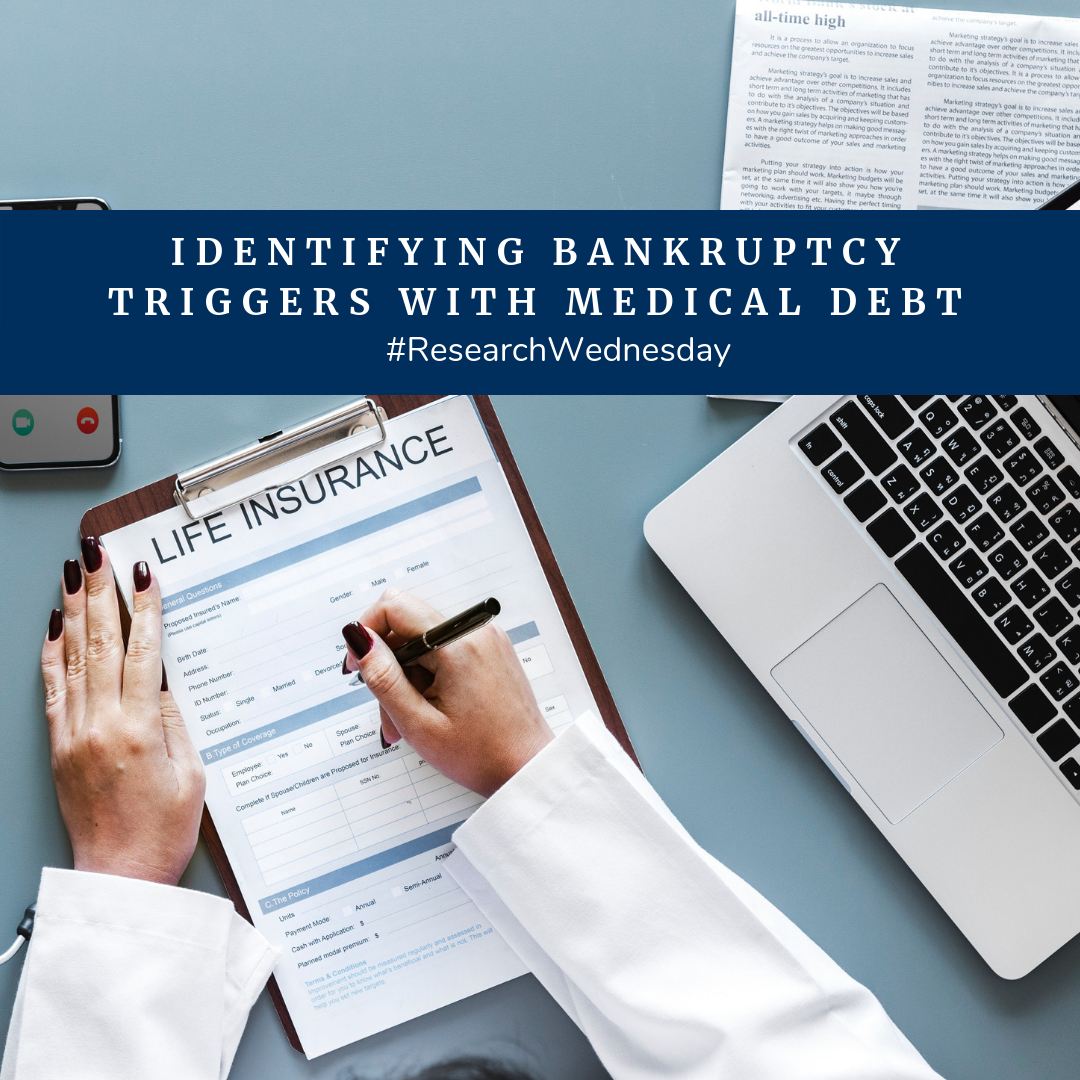The rising costs of health care and/or lack of insurance coverage may cause many households to build up medical bills to the point where they cannot pay them. A recent research study of bankruptcy filings found significant medical debt serves as a trigger, rather than a fundamental cause, of bankruptcy. Researchers found that medical debt played a role in approximately 32% of bankruptcies in the sample, but that medical debt was most of a household’s unsecured debt only in about 5% of bankruptcies. Bankruptcy filers with significant medical debt were more likely to have more than 50 creditors. A majority of reported medical debt was hospital bills, with the remaining from doctors and debts in collection. In general, poverty was determined as the underlying cause of filing for bankruptcy and not necessarily medical debts.
Researchers from Gonzaga University and North Dakota State University analyzed data from bankruptcy filings in the U.S. Bankruptcy Court’s Eastern District of Washington during the years of 2003, 2005, 2007, 2009, and 2011. Randomly selected 1,920 bankruptcy files were reviewed to reveal whether medical debt was associated with filing bankruptcy and who was more likely to file for bankruptcy. Nearly 57% (1,094) reported some type of medical debt, with 67% (730) having medical bills of less than $3,000. Using two different “at risk” measurements, a great majority (1,436) were not categorized “at risk” of bankruptcy due to medical debt.
The first measurement of “at risk” households categorized total medical debts at or above 10% of household income as significant medical debt. This method focused on the ability to pay medical debt based on available income sources. A total of 443 (40% of those with any medical debt) filers had medical debts at or above 10% of income, with a subset of 177 (16% of sample with medical debt) filers that were only categorized “at risk” as a percentage of medical debt-to-income and not the second measurement method of percentage of total unsecured debt.
The second measurement of “at risk” households categorized total medical debts at or above 15% of total unsecured debt as significant medical debt. This method focused on the nature of the unsecured debts and did not consider household income. A total of 307 filers (28% of those with any medical debt) had medical debts at or above 15% of total unsecured debt, with a subset of 41 filers (4% of those with any medical debt) that were only categorized “at risk” as a percentage of unsecured debt and not as a percentage of medical debt-to-income. In concluding remarks, the researchers described this method as reasonable, but slightly more imperfect than the percentage of income, an indicator of being at risk to file bankruptcy due to medical debt.
About 14% of the total sample (266) were categorized “at risk” by both measurements and the commonalities were explored. The researchers outlined three benefits of the study’s findings.
- The two methods are simple measurements that may easily identify “at risk” households on the verge of bankruptcy primarily due to medical debts.
- The creation of a profiling model of those “at risk” for bankruptcy filing due to medical debt may encourage policy discussions of more equitable policies for high-income households with significant medical debts. Specifically, the “means test” should have an exception when a majority of unsecured debt is health-related and not credit card debt, allowing higher-income households to qualify for Chapter 7.
- The use of empirical criteria can help financial counselors proactively identify households on the path towards bankruptcy due to medical debt. Financial counselors can then evaluate the likelihood, timing, and alternatives to bankruptcy when the household struggles to pay medical bills.
Continue the Conversation:
Tell us what you think in the comments below.
Download the research (available to AFCPE members or by request from the authors): Hackney et al. (2018).Towards a Working Profile of Medical Bankruptcy. Journal of Financial Counseling and Planning (JFCP), 29 (1).

Leave a Reply